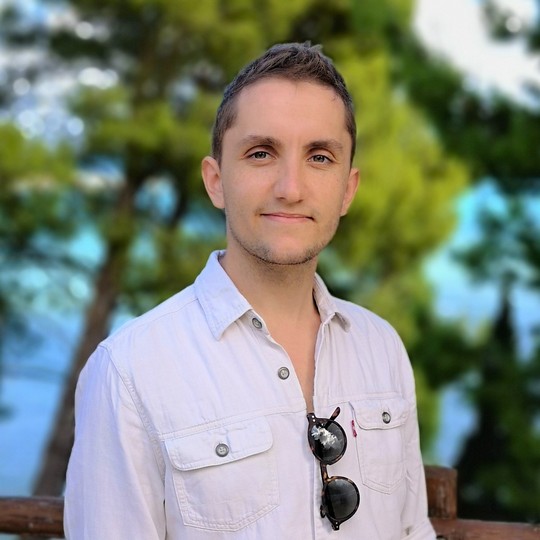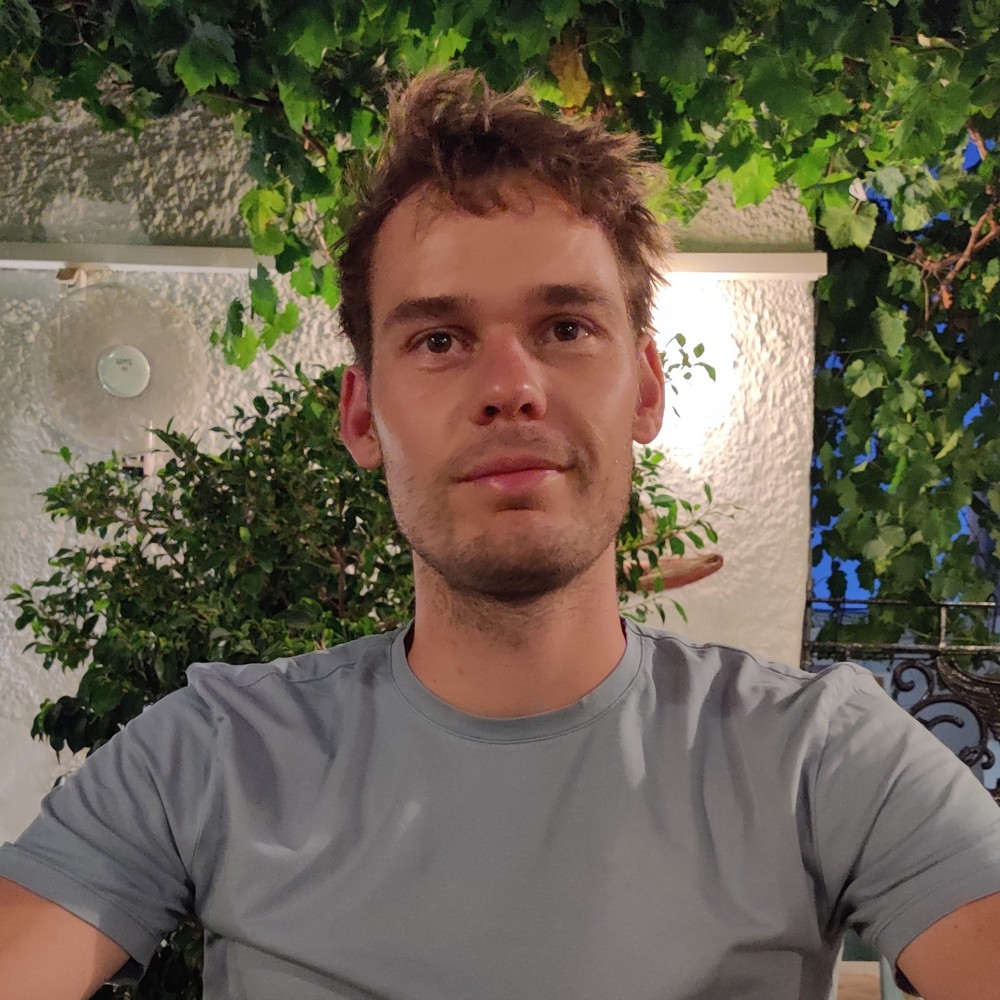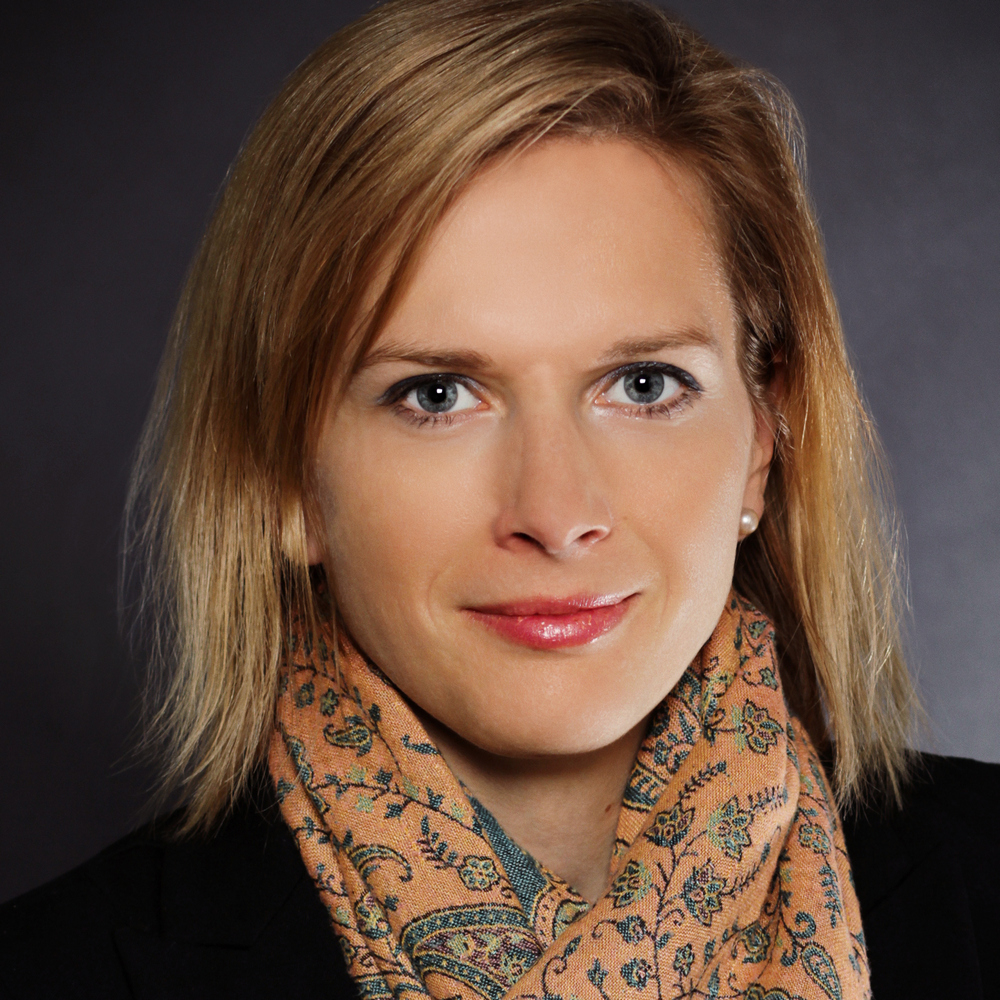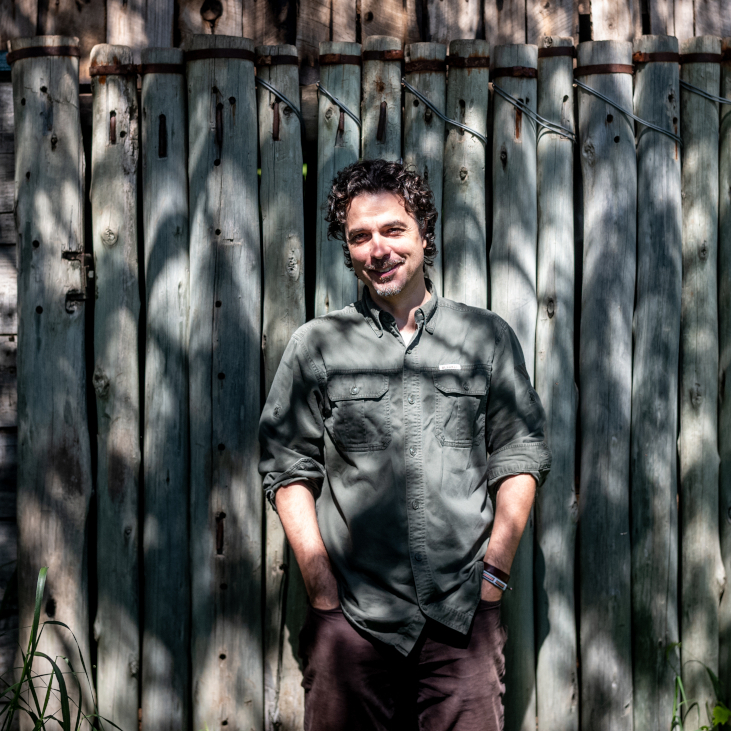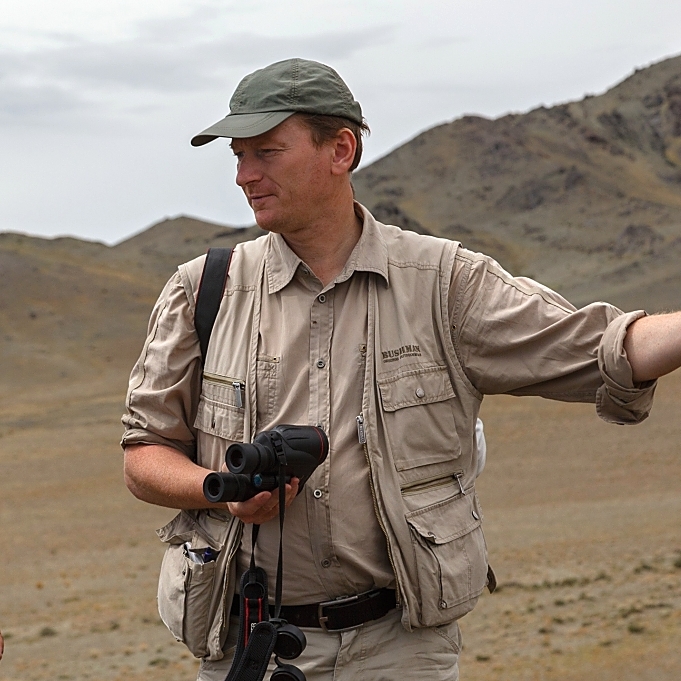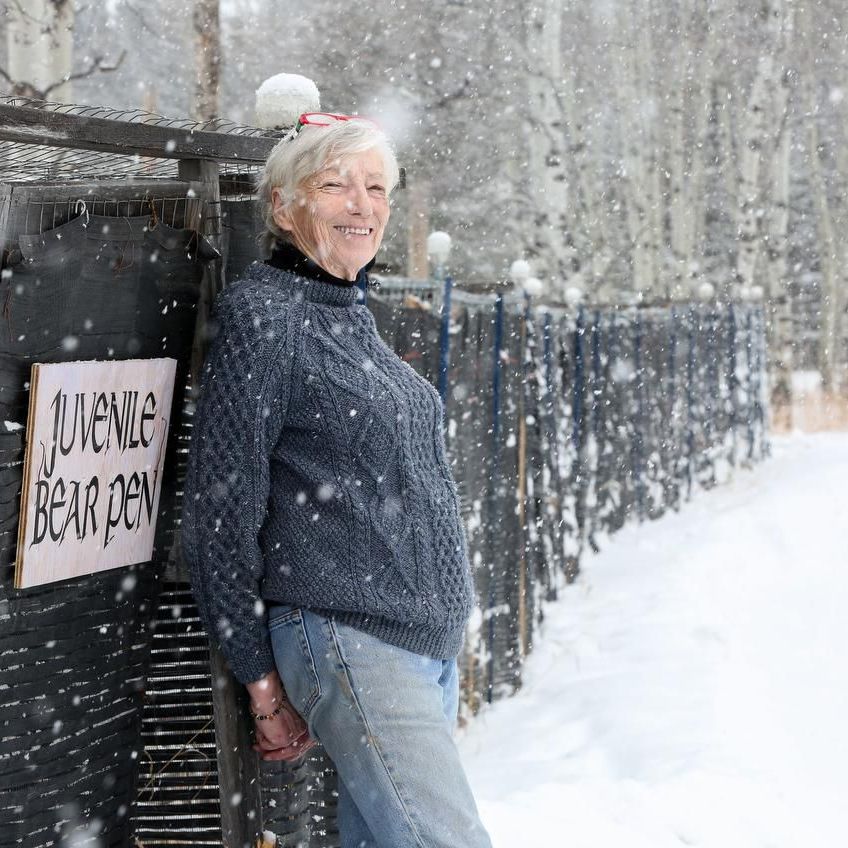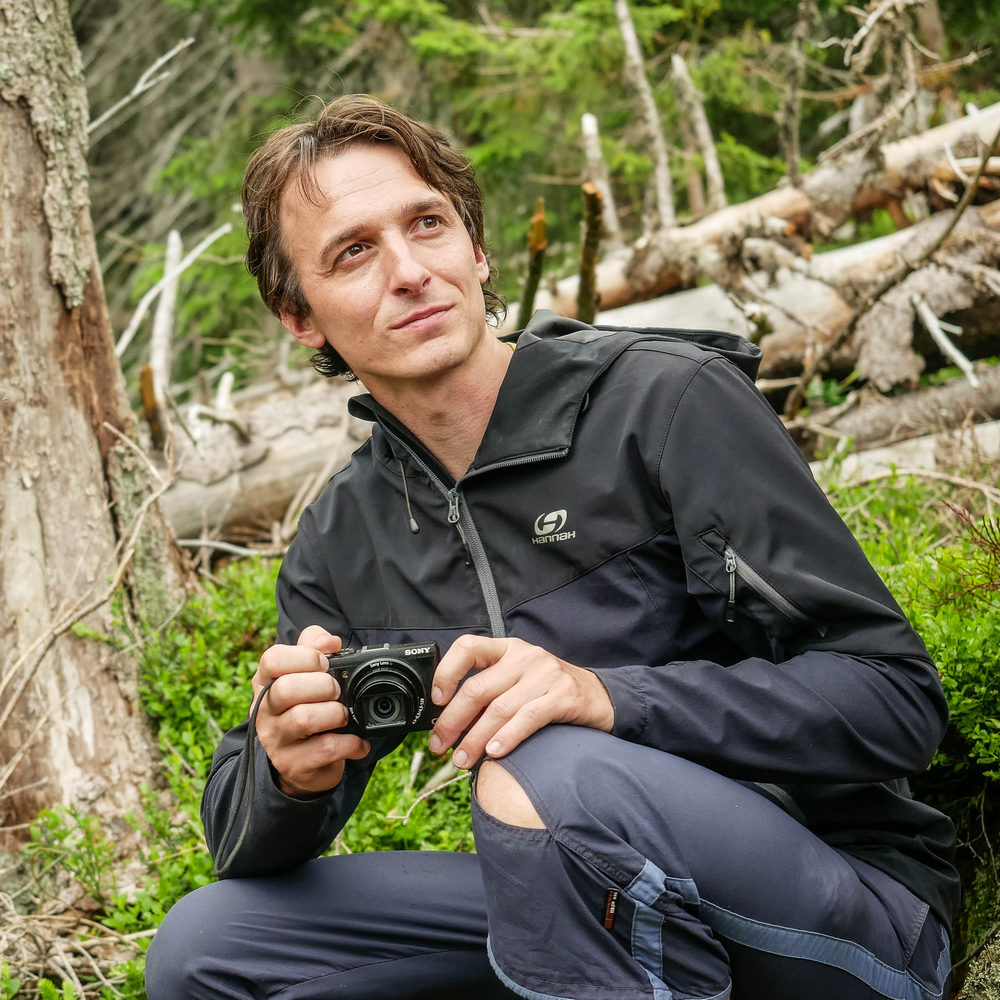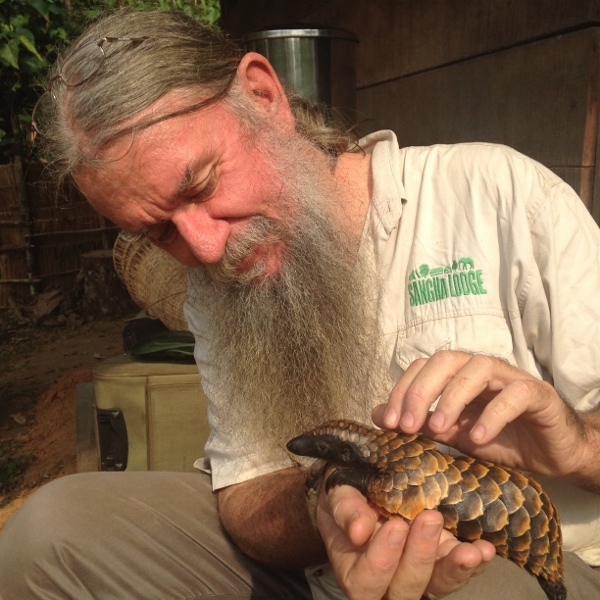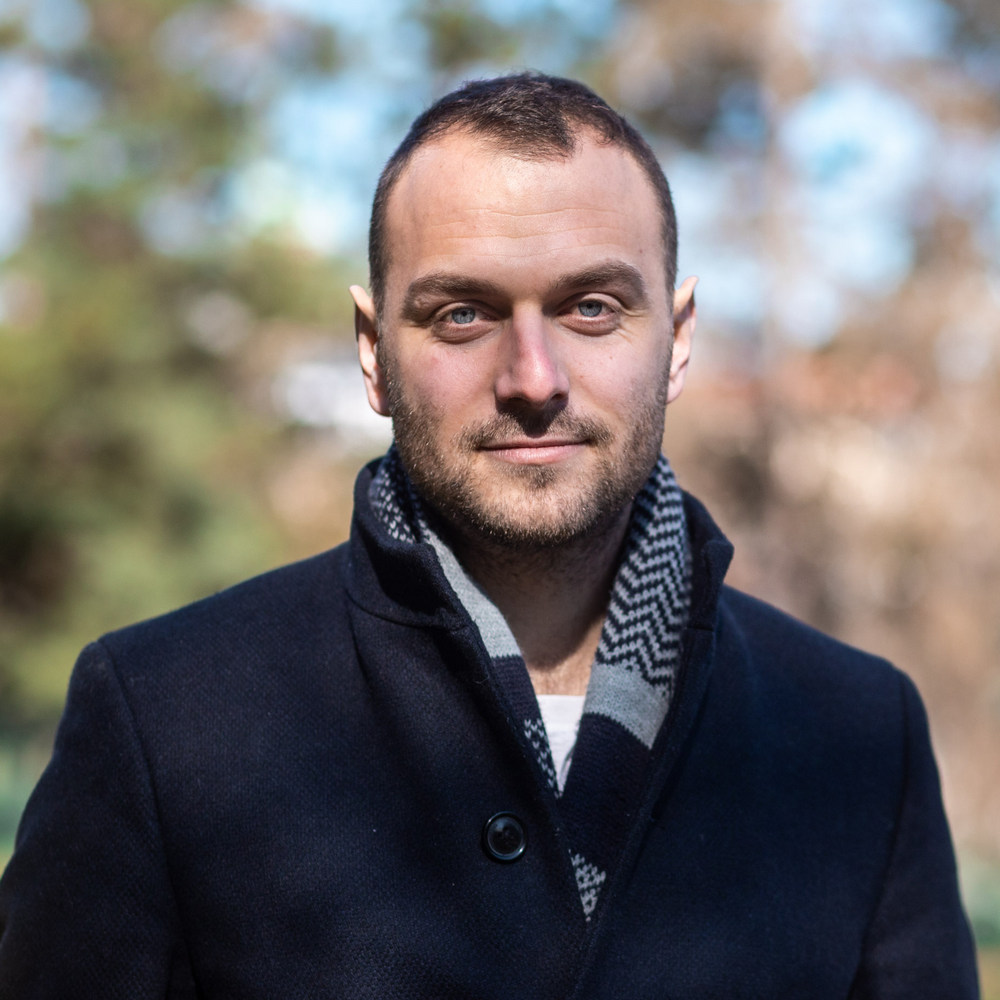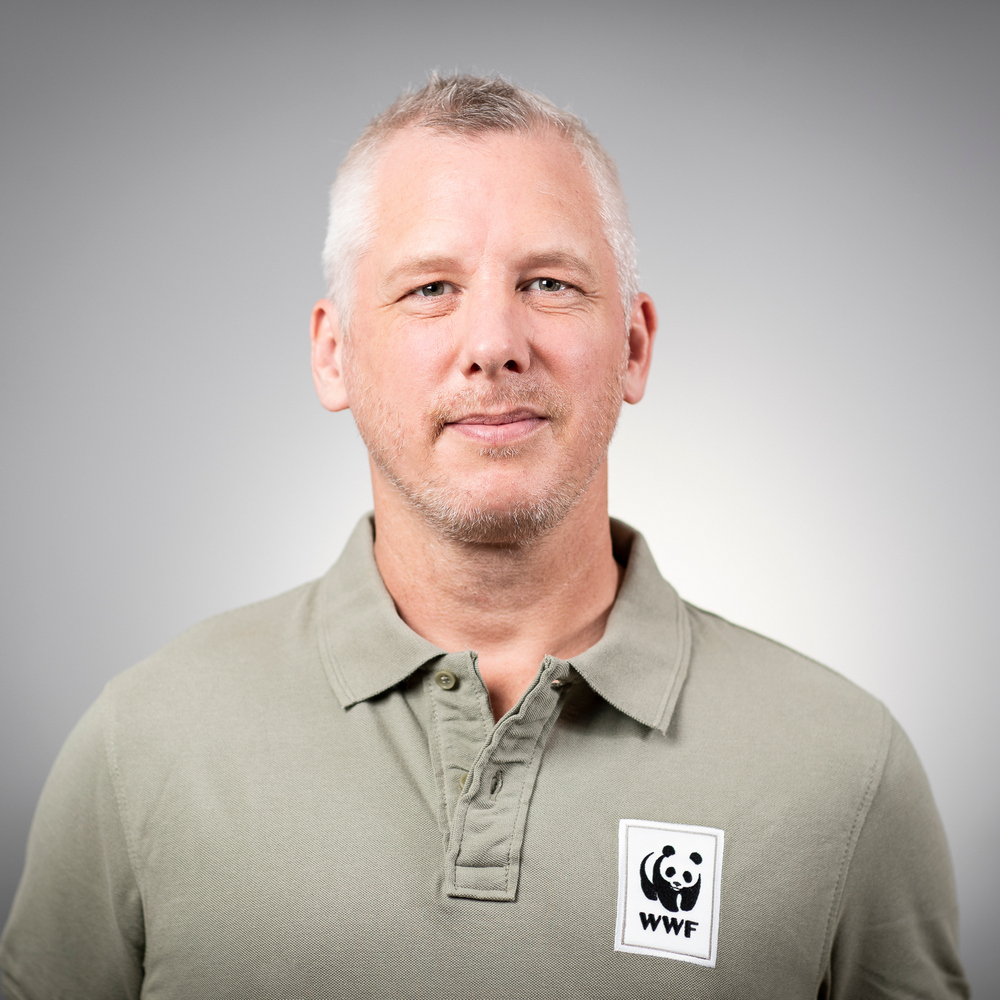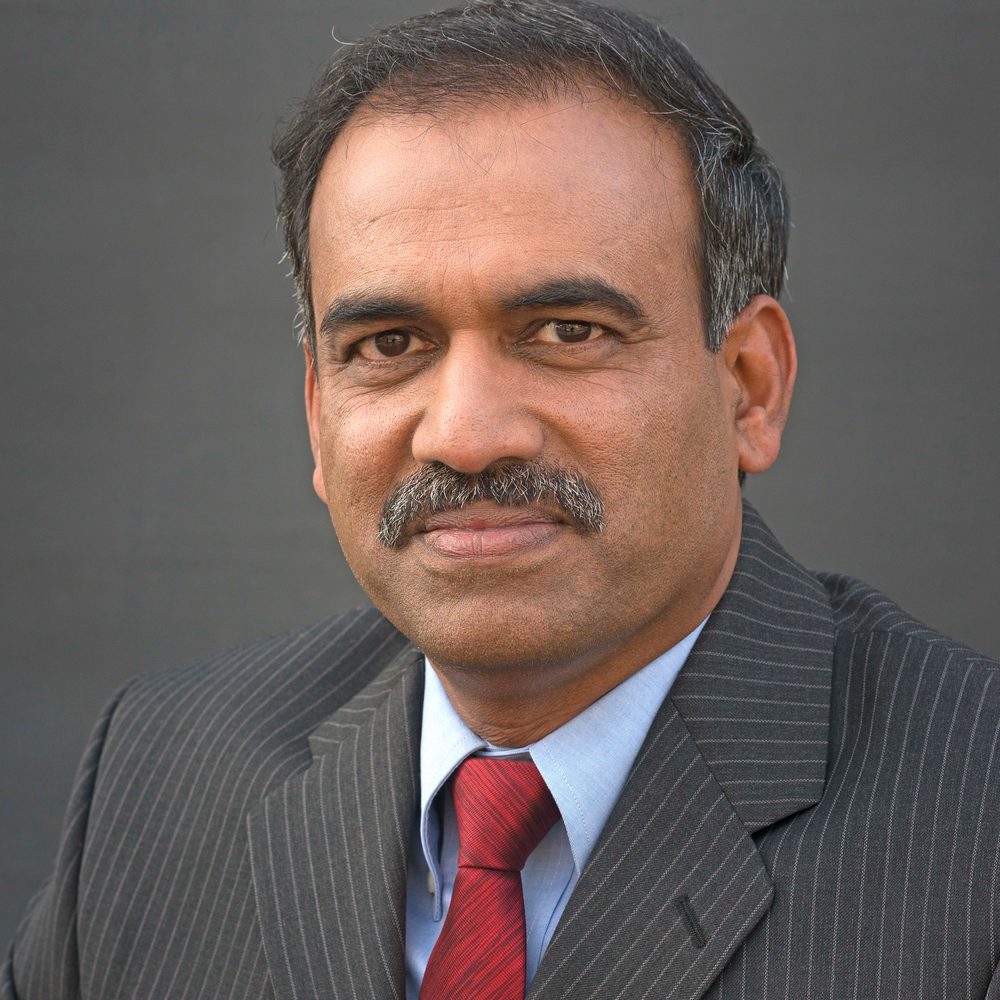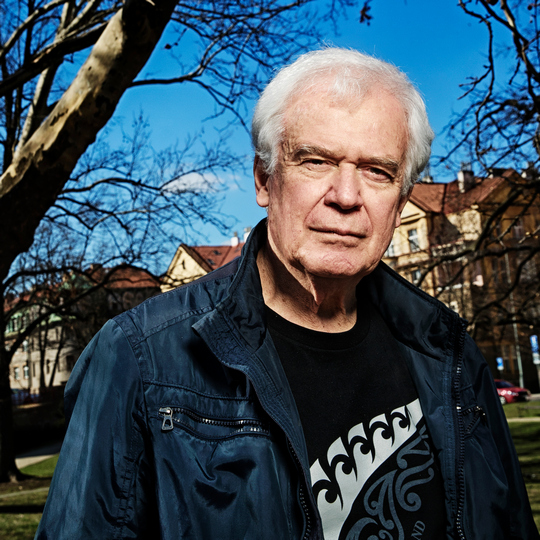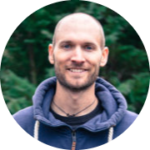THE WORLD AFTER 2020
from Crisis to Biodiversity Conservation
We now have the opportunity to look back at the year 2020 as a model „moment“ for the current biodiversity crisis from a science and nature conservation perspective, to characterize the specific factors behind the current challenges of the global ecosystem, and to present possible solutions and perspectives for the future. Will we learn from the mistakes of our current civilization toward the third decade of the 21st century?
BOOK OF ABSTRACTS
Please wait while flipbook is loading. For more related info, FAQs and issues please refer to DearFlip WordPress Flipbook Plugin Help documentation.
KEYNOTE SPEAKERS
Dr. Daniel Ingram
Building an evidence-base to track the hunting, consumption, and trade of wildlife
Online
Daniel Ingram is a Postdoctoral Researcher in the African Forest Ecology Group at the University of Stirling, and is an active member of the IUCN SSC Pangolin Specialist Group. Dan works on the WILDMEAT project which aims to develop an evidence-base on the hunting, consumption, and trade of wildlife, to inform sustainable management and policy decisions. Dan has published extensively on wildlife use, particularly in sub-Saharan Africa, and has managed several wildlife monitoring projects (using camera traps and acoustic sensors) across the tropics. His work uses a mixture of quantitative and qualitative methods from the natural and social sciences, and has broad interests in wildlife conservation, sustainable management, ethnozoology, conservation social science, and natural history.
Wildlife provides a vital source of food and livelihoods for millions of people across the tropics, yet overharvesting has been identified as one of the leading processes driving wildlife closer to extinction. Dr Ingram will present the WILDMEAT Project: an evidence-base and research toolkit on the hunting, consumption, and trade of wildlife globally. Using data collected from across Central Africa, he will then present novel analyses of the drivers of wildlife hunting across space and time, needed to help guide conservation decisions and sustainably manage wild meat resources based on the best available evidence.
Dr. Jiří Černý
Viruses in the globalized world
In-person
Jiří Černý received his PhD from the University of South Bohemia in 2016. During his post doc, Jiří worked at the Institute of Biomedical Sciences, University of Sao Paulo, Brazil and at the School of Medicine, Yale University, USA. His research is focused on infectious agents able to cross interspecies barrier with the special emphasis on arthropod-borne and other zoonotic viruses. After his return to Czech Republic Jiří started to work at the Faculty of Tropical AgriSciences, Czech University of Life Sciences. He set up the “e4 research group” focused on ecology, evolution, emergence, and epidemiology of viral zoonoses. He is one of the cofounders of the interfaculty Centre for Infectious Animal Diseases. He is also the member of the CZU mobiLAB team creating a mobile laboratory for in field pathogen detection in biological samples. Jiří is married and has two children, his hobbies are reading, sports and outdoor activities.
Viruses influence whole biosphere. From the beginning of life, they have formed evolutionary history of all species and their ecological networks by strong negative feedback. Humans are one of the most successful species in the history of Earth. In Anthropocene we drastically changed most environments on whole planet. Our expanse leads to increased chance of introduction of new zoonotic viruses into the human population. Global mobility allows spreading of these viruses all over the world leading to pandemics as we can see now on the example of COVID-19 caused by SARS-CoV-2.
Wahdi Azmi, DVM
Sumatran elephants: human – wildlife conflict in the stronghold of wilderness in Aceh
Online
Wahdi Azmi is a veterinarian from Aceh-Sumatra, Indonesia. He initiates and becomes the first head of the Center for Wildlife studies of the veterinary faculty of Syiah Kuala University in Aceh. He has 24 years of experience providing leadership, strategic direction, and high-level management support for numerous conservation programs. He also manages his own local NGO namely Conservation Response Unit Aceh where he mainly focuses on the Sumatran elephant conservation program. He is an IUCN-SSC Asian Elephant Specialist Group member since 2004.
Aceh in Indonesia is the last place on earth that harbours all four critically endangered species of Sumatran elephant, tiger, orangutan and rhino. Their habitats are being lost at an alarming rate due to the conversion of forest habitat for various developmental activities such as large scale plantations, roads and infrastructure. Presentation will be about conservation status update about key Sumatran wildlife with special emphasis on Sumatran elephant conservation challenges, including human-elephant conflict mitigation strategies being implemented in Aceh.
Elmar Fienieg, MSc.
Population management in Zoos and Aquariums: What piece of the conservation puzzle?
In-person
Elmar has worked most of his career for the European Association of Zoos and Aquaria (EAZA), where he managed to land his dream job as Population Biologist working for the newly established Population Management Centre (PMC). The 400 zoos and aquarium Members of our association collaboratively manage populations for over 400 species, ranging from Sumatran tigers to Desertas wolf spiders. This is done for mostly, but not exclusively, conservation purposes. His job is to support the coordinators of these so-called EAZA Ex situ Programmes (EEPs), by advising on demographic and genetic management and by helping to plan for the long run. As such, he has been lucky to be involved to some extent in many EEPs and continues to be inspired by the important biodiversity conservation role that these programmes can play for the world.
This talk will dive into the “secret” world of population management programmes of zoos and aquariums and the important role they can play in biodiversity conservation. It will contain a helicopter view of the recent developments of the European Association of Zoos and Aquaria (EAZA) community, which is characterised by its mission to become an integrated part of species conservation. It will investigate the challenges with reaching its full conservation potential and highlight how you may be able to help.
INVITED SPEAKERS
Veronika Hunt Šafránková, MBA
Global biodiversity towards 2030
Online
Veronika Hunt Šafránková has been Head of Brussels Office of the United Nations Environment Programme (UNEP) since April 2019. She has over 20 years of experience in the field of international environmental affairs. She joined UNEP after her assignment at the Charles University in Prague where she was in charge of internationalization and partnerships.
Previously, during her over twelve-year career at the Czech Ministry of Environment she has held different management positions, covering various areas above all international cooperation, EU relations, EU funds, national environmental policy, strategies and instruments, and representing the Czech Republic in relevant European and international bodies.
The presentation will bring some of such examples on a global scale as well as references to the European Green Deal. The overall focus will be put on global efforts to prevent, halt and reverse the degradation of ecosystems as we marked the launch of the UN Decade on Ecosystem Restoration in June 2021. It will include the to-be-negotiated post-2020 global biodiversity framework at the UN Biodiversity Conference in 2021 and 2022 which will guide actions worldwide through 2030, to preserve and protect nature and its essential services to people, in the context of the Earth’s interrelated environmental emergencies.
Prof. David Storch
The future of biodiversity in the Anthropocene
In-person
David Storch is a professor at Charles University in Prague. He is interested in macroecology and biodiversity, namely patterns of species diversity and distribution, and biodiversity dynamics. He is associate editor of journals Ecology Letters and Global Ecology and Biogeography. He was an editor of the book Scaling Biodiversity (Cambridge University Press, 2007) and co-authored six other books. He was a director of the Center of Theoretical Study at Charles University and the Academy of Science of the Czech republic, and a president of the Czech Society for Ecology.
We are living in the time of unprecedent impact of human civilization on the planet, called the Anthropocene. One of the most pressing issues is biodiversity change. However, biodiversity change cannot be simply reduced to species extinctions, and although extinctions represent most severe consequence of anthropogenic pressure on the biosphere, there are many other things going on. Spreading of non-native species and the emergence of new habitats leads to a rearrangement of biota on Earth, followed by hybridization and emergence of new species, eutrophication and climate changes lead to increasing ecosystem productivity and changing resource base for consumers. Such processes make predictions concerning biodiversity future difficult without a proper theory of biodiversity dynamics. I will show one theoretical approach to biodiversity dynamics which can be useful for encompassing the complex biodiversity changes we are facing.
Rens Ilgen, MSc.
Civil society fighting wildlife crime in Africa
Online
Rens Ilgen is an “angry“ biologist. After the studies in biology and after the travels, in which he was constantly mesmerized by the beauty of the natural world and depressed about what was left of it, Rens decided that his way would be to fight. Corruption being one of the biggest threats to the remaining nature and wildlife left, the answer for him is law enforcement. Rens went to Africa and joined the EAGLE Network, ending up as the coordinator of the Côte d’Ivoire and Togo project for the last 4-5 years. With these projects they investigate wildlife trafficking networks and work with the local authorities to arrest and prosecute the traffickers, fighting corruption along the way.
The presentation will be on how the EAGLE Network, a law enforcement NGO, succeeds in putting big traffickers behind bars in a race against the clock to protect some of Africa’s most iconic creatures. A case study of the dismantlement of a Vietnamese syndicate in Côte d’Ivoire, with some ties to wildlife trafficking in the Czech Republic, will be taken as an example.
Michael Hošek, MSc.
EU Protected Areas Under the Strict Protection – Solution or Challenge?
In-person
Michael Hošek is co-owner and managing partner of the INTEGRA Group (www.weareintegragroup.com), mainly focused on projects related to biodiversity conservation and capacity development in the EU and its candidate and associated countries.
Between 2002 – 2013, Mr Hošek worked at the Nature Conservation Agency of the Czech Republic, where he was Deputy Director – Head of Division of Nature and the Landscape Documentation. He was responsible for scientific and technical coordination of designation Natura 2000 network in the country, and international relationships including representation of the Czech Republic in the nature conservation at European level. Later on, he worked at the Ministry of the Environment of the Czech Republic as Director General for Nature Conservation – Head of Directorate of Nature and Landscape Protection during 2013-2014. Moreover, Mr Hošek has been serving as Vice President and Council member at the EUROPARC Federation since 2014, and as the Council member of International Union for Conservation of Nature since 2012.
The EU Biodiversity Strategy 2030 „…sets the ambitious goal of creating a truly coherent Trans-European Nature Network that includes the legal protection of at least 30% of the EU’s land and 30% of the EU’s sea, of which 1/3 (10% of the land and 10% of the sea) should be under strict protection…“ The presentation aims to discuss a definition of the strict protection, differences between non-intervention and intervention approaches at the EU scale, and their impact to protected areas biodiversity targets
Kateřina Holubová, MSc.
Eco-friendly livelihoods in exchange for safe wildlife in Sumatra: a conservation story, that modern zoos made possible
In-person
Kateřina Holubová gained her Master’s degree in Terrestrial Ecology at Charles University in Prague in 2015. Based on her lifetime interest in forests and biodiversity, during her studies, she started her early conservation career as a coordinator of the rainforest and palm oil campaign at the Greenpeace Czech Republic. Besides traveling (mostly) across Asia, in late 2014 Kateřina decided to dedicate her time also to volunteering and later even working for The Kukang Rescue Program, a conservation program striving to protect slow lorises in Sumatra, Indonesia. This cooperation grew into the current position at the Kukang program’s main partner – Ostrava Zoological Garden and Botanical Park where she administers and promotes in situ conservation projects managed or supported by the zoo as well as nature conservation in general. Among others, she has been actively involved in leading the Stolen Wildlife campaign that raises awareness about the illegal wildlife trade in Europe, and particularly in the Czech Republic. Kateřina has recently become also a coordinator of the new Trenggiling Conservation Program aiming at protection of critically endangered Sunda pangolins in Sumatra.
As was highlighted in the 2019 IUCN SSC’s Abu Dhabi Call for Global Species Conservation Action, modern zoological gardens play a key role in biodiversity preservation worldwide –thanks to both the breeding of species in human care (ex situ) and realizing or financing field conservation projects in the species’ natural areas (in situ). Some of these means of financing will be introduced in the presentation. Thanks to such zoos’ long-term support, The Kukang Rescue Program fighting the illegal trade in slow lorises in Sumatra started engaging local communities in wildlife conservation while at the same time supporting their sustainable, eco-friendly livelihoods. This way Kukang Coffee, the story of coffee, that protects nature, was born.
Dr. Andrew Tilker
In-person
Andrew Tilker is the Asian Species Officer at Re:wild (USA) and a post-doc at the Leibniz-Institute for Zoo and Wildlife Research (Germany). He completed his Dr. rer. nat. in 2020 at Freie University, Berlin. For the past decade, his work has focused on the conservation of little-known and threatened species in Southeast Asia, especially in the Annamites ecoregion of Vietnam and Laos. His experience on the conservation of Annamite endemic mammals and birds has led him to pursue conservation solutions that integrate both in-situ and ex-situ strategies. He is also involved in several large-scale wildlife monitoring projects (using camera-traps and environmental DNA) in Southeast Asia, as part of wider efforts to establish conservation baselines in priority areas. Andrew is based in Berlin, Germany, though travels often to Southeast Asia.
Anthropogenic pressures have caused the widespread loss of biodiversity from tropical forests. Among tropical regions, the Annamites ecoregion of Vietnam and Laos stands out for its high concentration of endemic and threatened species – including several mammals only recently discovered by science – and the unprecedented level of threat that it faces from unsustainable hunting. To save the Annamites biodiversity, conservation stakeholders will need to build new and collaborative approaches that integrate in-situ and ex-situ conservation strategies. Andrew will talk about how these innovative solutions can prevent the extinction of Annamite species, and discuss how these approaches can be applied in other contexts.
Jan Stejskal, MSc.
How to Breed an Extinct Species? The Curious Case of the Northern White Rhino
In-person
Jan Stejskal is Director of Communication and International Projects at Safari Park Dvůr Králové, Czech Republic. After finishing his degree in anthropology, for ten years he covered nature and environmental issues as a journalist. Since joining Safari Park Dvůr Králové in 2013, he has managed a number of unique projects, including the efforts to save the northern white rhino or transportations of the black rhino from European zoos to national parks in Tanzania and Rwanda. Also, he has organized large public events and campaigns aimed at awareness raising, including the first public rhino horn burns in Europe that provoked much attention even in Vietnam, primary destination for the poached rhino horn.
There are only two northern white rhinos (NWR) known to humans at present, both females, neither of them capable of natural reproduction. BioRescue, an international consortium of scientists and conservationists coordinated by Safari Park Dvůr Králové, develops suitable technologies and protocols to rescue NWR through advanced techniques of artificial reproduction such as in vitro fertilization, embryo transfer or generation of stem cells that could be used for generating reproductive cells. Such an approach enhances chances of successful preservation of a species after ”classic” conservation approaches – e.g. habitat protection or a regular ex-situ breeding program – didn’t deliver the hoped-for result.
Adéla Hemelíková, MSc.
Specifics of sea turtle use and trade in selected areas in Sumatra, Indonesia
In-person
Adela Hemeliková is a field zoologist and researcher in the Conservation and Research Department at Liberec Zoo. She is also PhD candidate in the Department of Ecology at Czech University of Life Sciences in Prague, and a research collaborator at Syiah Kuala University, Indonesia. Adela focuses on sea turtle conservation and research in Indonesia. She is a member of the Asia-Pacific Marine Turtle Genetic Working Group, and together with her team from Liberec Zoo and Syiah Kuala University is working on the research that aims to increase the conservation and management effectiveness of sea turtles through community and genetic approaches in Sumatra, Indonesia. The research consists of mapping and understanding the illegal sea turtle trade, and the identification of population genetic structures in selected nesting sites
Sea turtles present one of the key species in our oceans and seas. Unfortunately, sea turtle use and trade continue in many parts of the world and cause significant declines in sea turtle populations. Indonesia is historically one of the hotspots for both domestic and international sea turtle trade. In Indonesia, a lot of information about this illegal trade is missing, yet its understanding is vital for proper conservation actions. During the presentation newest data on sea turtle use and trade in Indonesia will be presented and its specifics will be explained in further cultural and socio-economical contexts.
Matthew Ward
The Other Side Of Conservation: How People Impact The Success Or Failure Of A Conservation Initiative
Online
Matt currently lives with his wife Ysabella in the Philippines, but he has been working in conservation around the world for the last 10 years. Working in Thailand, Madagascar, Indonesia and South Africa, Matt has a wealth of experience in conservation research and wildlife monitoring which have led him to lead the conservation projects of the Talarak Foundation on Negros Island, Philippines. At the Talarak Foundation Matt is in charge of the reintroduction and conservation of 5 endemic endangered species, including two large mammals and three birds. Although the research of these species is a major component of their conservation effort, the primary route to survival for these species is harmony within the community and a local desire for these species to thrive in the area. Matt is currently working on developing grass-roots programs on the island of Negros to foster passion for wildlife, build capacity in conservation skills, and identify ways to integrate rural communities into environmental restoration programs.
As biological researchers we look predominantly at habitats and wildlife, aiming to improve their survivability by studying their life histories, ecology and interactions. But we are missing some of the biggest impacts to survival by looking here. We entered the Bayawan Nature Reserve wildlife reintroduction project with the intention of working with the community as much as the wildlife. We have seen a great level of mutual respect from the community personnel and reserve, maintaining engagement and building capacity for the local people where it helps them most. We have had great success hiring local personnel for the reserve, with labor and skilled positions being filled to develop the economic options for the community and to build skills for their future. Without relying only financial incentives, we have also been able to build pride and excitement within the local villages through personal engagement, assistance with local services and building trust.
Dr. Jaroslav Šimek
The Przewalski’s horse: a textbook conservation story and its future challenges – The Return of the Wild Horses project.
In-person
Jaroslav Šimek completed his Ph.D. in zoology at the University of South Bohemia and since 2004, he has been working at Prague Zoo. He started as the curator of ungulates and since 2010, he has held the position of Deputy Director and is in charge of the zoological department. For the entire time at the zoo his professional career has been heavily involved with the Przewalski’s horse. He is a vice-chair of the EAZA Equid TAG (Taxon Advisory Group), a species committee member of the Przewalski’s horse EAZA Ex Situ Programme and since 2018 he has kept the Przewalski’s horse International Studbook. He is also a member of the IUCN SSC Equid Specialist Group. He has travelled many times to Mongolia as a part of the management team for The Return of the Wild Horses project.
The successful story of ‘the last wild horse’ is well known, but is it really safe, and what are the challenges? Prague Zoo is engaged in saving the Przewalski’s horse in the long-term. Over the last decade it has set up The Return of the Wild Horses project. In a unique cooperation with the Czech Army, and the International Takhi Group, 38 horses were released in western Mongolia to boost the local population. However, to ensure the long-term survival, much more is needed. Parallel activities consist of support for local rangers, governmental conservation bodies, the related monitoring and research as well as support for the local communities and even political lobbying.
Clio Smeeton
Differing perspectives on Wildlife Management in Alberta, Canada and their impact on species survival and biodiversity.
Online
Clio Smeeton has worked with animals and conservation issues since 1962. She worked in Africa, B.C. and Alberta. Her interest in wildlife start as a child but in the early 1961 Clio worked Jeremy Mallinson, OBE, FIBiol, FRGS of the Durrell Wildlife Park and Durrell Wildlife Conservation Trust, when he was collecting indigenous species in the Okavango Swamp. In 1964 she brought White Rino’s to Calgary Zoo as part of Dr.Ian Player Operation Rhin. In 1971, with Miles and Beryl Smeeton, she established the Wildlife Reserve of Western Canada (later the Cochrane Wildlife Reserve and now the Cochrane Ecological Institute, CEI) and established branch of the Institute in B.C. In Alberta, her work focused on breeding endangered species for reintroduction, and in B.C., on the rehabilitation and release of orphaned wildlife, and environmental research and education. The Institute has been involved with the protection and reintroduction of North American bison, trumpeter swans (in partnership with the CWS), and swift fox With her parents she initiated the Canadian swift fox reintroduction programme (1978 – 1997), the first swift fox reintroduction in the USA (1998-2003) and in partnership with the Blood Tribe the first reintroduction of swift fox on aboriginal land in Canada. The Institute founded an international Cetacean survey (est. 1986 –ongoing). The Institute provides Field Station research facilities to undergraduate, graduate and post graduate students. In addition to Alberta Wildlife Rehabilitation Aassociation, the CEI is a member of the International Union for the Conservation of Nature, IUCN, Reintroduction Specialist Group, the IUCN Behavioural Action Group, , Otter Specialist Group and RSG Human-Wildlife Interactions in Conservation Translocations working group and the Organization of Biological Field Stations
The „landscape“ view of biodiversity which means – at least from a government perspective here in Alberta that the individuals within a species are unimportant. We can examine this using two case studies in which we were involved;
- Swift Fox reintroductions:
In 1978 declared extirpated in Canada and some of the northern United States. Captive Breeding program at CEI in 1971/72. First reintroductions in 1983 concluding in 1997 (over 900 Swift Fox reintroduced). - Bear (Black and Grizzly) Management in Alberta:
Government reluctant to continue to rehab and release orphaned bear cubs. CEI and other facilities do work at no cost to government. Do not respond to Rehabilitation protocol improvement from NGO’s.
Dr. Martin Mikoláš
Carpathian primary forests – research and conservation
In-person
Dr Martin Mikoláš is a Postdoctoral Researcher at the Department of Forest Ecology in the Czech University of Life Sciences Prague. Research interests include forest dynamics, conservation biology, ornithology and dendroecology. Dedicated the last 13 years to work on ornithology research with strong focus on mountain grouse species and simultaneously dedicated the last ten years to work on dendroecological research of primary mountain forest in central and eastern Europe. He is a member of Forest Dynamics and Biodiversity research group that established REMOTE network (www.remoteforests.org). The build-up of this research network resulted in what is currently one of the largest forest research networks of permanent research plots in primary forests dominated by Picea abies and Fagus sylvatica. The network comprises more than 1000 permanent research plots established in several European countries.
Currently, most European forest landscapes are intensively managed, and natural forests are disappearing. Despite the small total area of these valuable ecosystems, they are still directly endangered by logging. Road construction increases accessibility in mountain areas that have been largely protected due to their inaccessibility for centuries. Protected areas, such as national parks or NATURA 2000 sites, do not ensure conservation of natural habitats. Our extensive study highlights the ineffectiveness of protected areas in Europe and the importance of national primary forest inventories; we recommend the inclusion of European primary forest conservation strategies to stop the rapid loss of the last primary forests and their unique biodiversity.
Rod Cassidy
Experiences in making an ecotourism project work to fund biodiversity conservation
Online
Rod Cassidy lives and works in the Central African Republic (CAR) in the heart of the rainforest. Originally, he hoped to drive a small conservation project using income from tourism in the region but has learned that tourism is a fickle master, and that any conservation work has to be priority and funded elsewhere, and that tourism can only ever be a complimentary activity that serves the cause.
He is South African and has always worked as an eco-tourism operator and guide travelling to remote places in search of birds with and without tourists. Rod has always been drawn to rain forests and his first exposure in Africa was Gabon, later Republic of the Congo and finally CAR where he later settled to develop his own project. They live in Paradise, surrounded by a huge biodiversity that keeps them occupied and invested every single day. Together with his wife Tamar, they run the Sangha Conservation Initiative, and the Sangha Pangolin project, as well as the Sangha Lodge.
A common perception in the global tourism market is that the money spent in “eco-lodges” is directly helping to fund conservation efforts. Buzz words and catch phrases are often used to sell and enhance this idea. Conservation of large tracts of land is expensive and it is my experience that tourism can never be the sole funder of these costs and in all, but a very few instances does not even get close to a small percentage of these costs. Working and living in the Dzanga Sangha in Central African Republic, I started the Sangha Lodge with the idea of being the fine example of one of these lodges. The talk will cover some of the lessons we have learned from our work here have led us to understand the fallibility of Tourism as a tool and some of our own conclusions.
Vojtěch Vosecký, MSc.
The links between circular economy, climate change and biodiversity in cities – a story from Prague
Online
Vojtěch Vosecký is a leading expert in the field of circular economy in the Czech Republic. He finished his master’s degree in urban environmental management at Wageningen University (NL), co-founded and operated a successful circular economy NGO in Czechia, INCIEN, and worked on related issues in the European Parliament. He currently works with a world leading organization Circle Economy as an Associate focused on Nordics and the CEE. He is also in charge of Prague’s transition towards the circular economy, as a Chairman of a steering committee for the circular economy. Vojtěch privately advises a number of organizations in their circular transition, and is a member of several groups such as MŽP’s Circular Czechia 2040, Circular Economy Club and Visegrad for Sustainability.
Cities play a vital role in the global economy. Home to more than half of the world’s population, they are creative, innovative centres of growth. But with the expected projections of our population reaching 10 billion by 2050 and urbanization up to 70%, the way we build our cities in the next 30 years will decide about the future of our planet. The presentation will focus on global issues, as well as tell a local story about Prague, its carbon neutrality pledge and results and lessons learned until now.
Dr. Thomas Breuer
Forest Elephants in Central Africa – outlook for recovery and coexistence?
Online
Thomas Breuer is Senior Program Officer for Central and West Africa for WWF Germany 8since 20217). Thomas holds a PhD in Biology (Male gorilla reproductive success) from the Max Planck Institute for Evolutionary Anthropology. Thomas has been working in Central Africa since 1998 conducting biological surveys in north-eastern Gabon, research on African wild dogs in northern Cameroon and western lowland gorilla and forest elephant research in the Republic of Congo where he has been working as the Principal Investigator of the Mbeli Bai Study from 2002 until 2015 and the Principal Technical Advisor and Director of Nouabalé-Ndoki National Park from 2010 to 2015 including transboundary conservation within the Sangha Tri-national (World heritage site since 2012). Between 2015 and 2017 he has been in charge of capacity building projects for WCS-Congo and biodiversity action plans of extractive industries. Thomas is interested in the behavioural ecology and conservation of large mammals and in all aspects of protected area management, most notably research, community conservation, environmental education and law enforcement. Since 2020 he is also acting as WWF´s Forest elephant coordinator.
This year the Forest Elephant was listed Critically Endangered, due to poaching for ivory, habitat loss, fragmentation, human-elephant conflict, and climate change. The world urgently needs to come up with a holistic approach to save this species from extinction. Here, I present our current knowledge of the conservation status of forest elephants in Central Africa and describe short, medium and long-term measures that can help to ensure their survival. I furthermore describe how forest elephants will coexist with people in their range countries.
Dr. Budhan Pukazhenthi
Integrating animal management practices and reproductive sciences for conservation of endangered ungulates
Online
Budhan Pukazhenthi completed his Bachelor of Veterinary Sciences in India (1987), Masters (1992) and Ph.D. in animal sciences (1996) at the University of Maryland, USA. He has been working at the Smithsonian Conservation Biology Institute (SCBI) since 1992. He leads the ungulate conservation program at SCBI where he manages research on several rare and endangered species including the Przewalski’s horse, Persian onager, Scimitar-horned oryx, and the Brow-antlered deer. Budhan also conducts genomics research on ungulates to develop novel technologies for the assessment of genetic diversity, inbreeding, and relatedness of individual animals. His research team was responsible for the first-ever successful artificial insemination of Persian onagers, Przewalski’s horse, and most recently the Scimitar-horned oryx. He is the Chair of the Association of Zoos and Aquarium (AZA) Biobanking Scientific Advisory Group. He is also a member of IUCN Equid Specialist Group, IUCN Tapir Specialist Group, and IUCN Deer Specialist Group. Further, he is a member of several AZA Taxon Advisory Groups including equids, cervids, antelope, and tapirs. He also serves on the Board of the Conservation Centers for Species Survival, a non-profit conservation organization. Budhan has published over 100 peer-reviewed manuscripts on diverse topics and mentored numerous post-doctoral fellows and students.
The Smithsonian Conservation Biology Institute is home to 21 rare and endangered species where staff design, develop, and evaluate improved animal management practices to enhance reproductive success, support conservation research, and produce animals for reintroduction. Our general approach involves integrating management practices to facilitate safe hands-on research on rare and endangered species. This presentation will highlight our experiences with wild equids (Przewalski’s horse and Persian onager) and a North African desert antelope, the extinct-in-the-wild Scimitar horned oryx. Our successes can be attributed to our broad institutional support (investments in infrastructure), experienced animal management staff, and systematic approach to understanding the biology of the species. We believe that such efforts can assist in maintaining self-sustaining populations and permit species recovery.
Tereza Mináriková, MSc.
Illegal hunting – a major threat for the BBA lynx population?
In-person
After acquiring her MSc in Zoology at the University of South Bohemia, Tereza Mináriková had been working at the Nature Conservation Agency of the Czech Republic as an expert in the area of biodiversity research, conservation and management. She became the Head of the Department of Species Action Plans and subsequently the Head of Unit of Conservation Strategies. Since 2012 she has been working at ALKA Wildlife as a manager of research projects. She worked on two international projects dealing with monitoring and conservation of the Bohemian-Bavarian-Austrian lynx population – the Trans-Lynx Project and the 3Lynx Project. She is also a PhD student of Ecology at the Faculty of Environmental Sciences, Czech University of Life Sciences Prague. Her mission is to acquire, disseminate and apply knowledge related to animal biology and ecology in order to protect species by providing effective, scientifically-based action and management plans. She specifically focuses on Eurasian lynx (Lynx lynx) conservation and research.
The Bohemian-Bavarian-Austrian (BBA) lynx population stretches along the border of the Czech Republic, Eastern Bavaria and Upper and Lower Austria. Extirpated in the 19th century, lynx of Carpathian origin has been reintroduced here in the 1970ies and 1980ies. The core area comprises the two national parks and landscape-protected areas along the borders. However, the favourable habitat of woodlands stretches far into the lowlands. The population size is currently being assessed as 130 independent animals in the area of 12 000 km2. Due to its small size, isolation from neighbouring lynx populations and the threat of genetic inbreeding, the BBA population is considered highly endangered. Moreover, the population shows very high turnover rates both in subadults (51%) and adults (28%), suggesting high levels of human-induced mortality. Is illegal hunting to blame, and what do we know about this population threat so far?
INVITED FILMMAKER
Michael Havas, M.A.
MORITURI TE SALUTANT
In-person
Kiwi-Czech filmmaker Michael Havas is a graduate of the Prague Film Academy, FAMU. Since 1972 Michael Havas has written, directed or produced over 60 films, many of which have received international awards. He is respected in New Zealand as the author and director of the first feature documentaries shot about the famous 28th Maori Battalion which he made in the 1970s at a time when there were no Maori filmmakers. Today his trilogy Once upon an Island (1975), Sons of Tu Mata Uenga (1977) and Beyond the Battalion (2017) is considered a national treasure. In 1982 Havas started working with Jan Švankmajer and secretly engineered Švankmajer´s first full length feature, Alice (1988), followed in 1994 by Faust. In 1990 Havas researched and line-produced 10 films for the BBC on post-Velvet Czechoslovakia which were screened during the fortnight preceding the first free elections under President Havel. In 2015 he co-authored a 3D feature length wildlife documentary Aldabra on the world´s second largest atoll in the Seychelles, narrated by Pierce Brosnan. Apart from the BBC he has worked with Channel 4, ARD, ZDF, ORF, TVNZ, ČT, Maori TV and has produced animation for Peter Gabriel, MTV and Virgin Records.
A 1975 documentary about Josef Vágner, visionary founder of SAFARI Zoo in Dvůr Králové n. L. Vágner forecasts with chilling precision the environmental destruction we are now witnessing. Set in Cold War Czechoslovakia the film won two awards at Academia Film. Five days later all 49 giraffes were massacred by the Secret Service.
WHY ATTEND THE CONFERENCE?
The 6th Global Biodiversity Conservation Conference will traditionally connect exact science with non-profit activism, the business sector, and government agencies.
Do you have any questions?
CONTACT US!
This site is protected by reCAPTCHA and the Google Privacy Policy and Terms of Service apply.
ORGANIZATIONAL TEAM
Faculty of Logistics and Crisis Management, TBU in Zlín
Faculty of Tropical AgriSciences, CZU in Prague
Faculty of Environmental Sciences, CZU in Prague
Zoological Garden and Botanical Park Ostrava
Czech Coalition for Biodiversity Conservation
Follow Us On Social Media
Wanna know more? Stay tuned!











